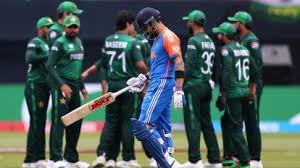India vs Pakistan: The Ongoing Rivalry

Introduction
The rivalry between India and Pakistan is one of the most intense and storied in the world, transcending sports, geopolitics, and cultural narratives. From cricket matches to cross-border conflicts, this rivalry resonates deeply with millions and influences public sentiment in both countries. Understanding this relationship is crucial as it impacts regional stability, international relations, and even bilateral trade.
Historical Context
The roots of the India-Pakistan rivalry can be traced back to the partition in 1947, which led to widespread violence, mass displacement, and animosity between communities. The two nations have fought three major wars (1947, 1965, and 1971) and several skirmishes over disputed territories, most notably Kashmir. This ongoing conflict lays the groundwork for their contentious relationship amid rising nationalistic sentiments.
Recent Developments in Sports
Cricket serves as a high-profile platform where this rivalry plays out dramatically. Recent matches in international tournaments, such as the 2023 ICC Cricket World Cup, have showcased thrilling encounters and captured the attention of the cricketing world. With India winning the last face-off in October 2023, the fervor among fans has only intensified, as each game carries the weight of history and national pride.
Political Dynamics
The political implications of the rivalry are significant. Accusations of terrorism, military standoffs, and diplomatic stalemates have characterized India-Pakistan relations for decades. Notably, the Pulwama attack in 2019 led to heightened tensions and military exchanges, showcasing how sports and politics often intertwine. International mediators frequently caution both nations against escalation, emphasizing the need for dialogue and cooperation.
Conclusion
The India vs Pakistan rivalry remains a complex interplay of history, culture, and politics. While sporting events provide a platform for showcasing talent and national pride, the underlying issues continue to pose challenges for peace and stability in the region. As both nations evolve, the hope for a more productive relationship remains, but it hinges on addressing deep-seated grievances and fostering mutual understanding. Future dialogues and sportsmanship may hold the key to transforming this rivalry into a partnership, enabling both nations to benefit from collaboration rather than conflict.









